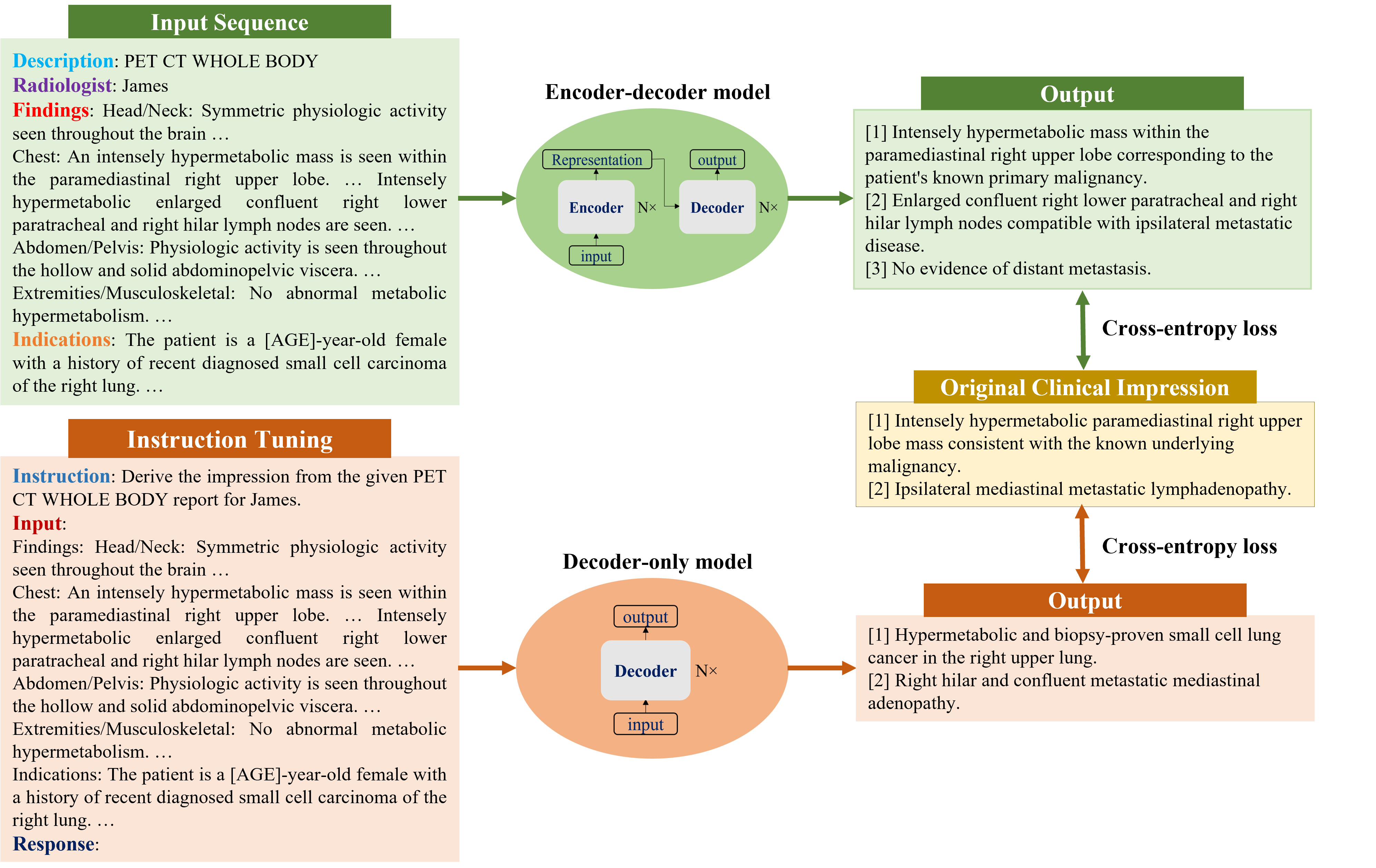This repository contains the code for the paper Personalized Impression Generation for PET Reports Using Large Language Models (accepted by Journal of Imaging Informatics in Medicine).
We shared three implementation methods in this repository:
- fastAI Implementation: simple and easy to use
- Non-trainer Implementation: more flexible
- Trainer (with deepspeed) Implementation: reduce memory usage and accelerate training
Summary: The fine-tuned large language model provides clinically useful, personalized impressions based on PET findings. To the best of our knowledge, this is the first attempt to automate impression generation for whole-body PET reports.
Key Points:
- 📈 Among 30 evaluation metrics, domain-adapted BARTScore and PEGASUSScore exhibited the highest correlations (Spearman's ρ correlation=0.568 and 0.563) with physician preferences, yet they did not reach the level of inter-reader correlation (ρ=0.654).
- 🏆 Of all fine-tuned large language models, encoder-decoder models outperformed decoder-only models, with PEGASUS emerging as the top-performing model.
- 🏅 In the reader study, three nuclear medicine physicians considered the overall utility of personalized PEGASUS-generated impressions to be comparable to clinical impressions dictated by other physicians.
In this work, we investigated both encoder-decoder and decoder-only language models. Considering their different architectures, we customized input templates as illustrated in the figure below. Note that for decoder-only models, we employed the instruction-tuning method and adapted the prompt from Alpaca
We already released our model weights in Hugging Face. To generate the impressions, run the following code:
finetuned_model = "xtie/PEGASUS-PET-impression"
tokenizer = AutoTokenizer.from_pretrained(finetuned_model)
model = AutoModelForSeq2SeqLM.from_pretrained(finetuned_model, ignore_mismatched_sizes=True).eval()
findings_info =
"""
Description: PET CT WHOLE BODY
Radiologist: James
Findings:
Head/Neck: xxx Chest: xxx Abdomen/Pelvis: xxx Extremities/Musculoskeletal: xxx
Indication:
The patient is a 60-year old male with a history of xxx
"""
inputs = tokenizer(findings_info.replace('\n', ' '),
padding="max_length",
truncation=True,
max_length=1024,
return_tensors="pt")
input_ids = inputs.input_ids.to("cuda")
attention_mask = inputs.attention_mask.to("cuda")
outputs = model.generate(input_ids,
attention_mask=attention_mask,
max_new_tokens=512,
num_beam_groups=1,
num_beams=4,
do_sample=False,
diversity_penalty=0.0,
num_return_sequences=1,
length_penalty=2.0,
no_repeat_ngram_size=3,
early_stopping=True
)
# get the generated impressions
output_str = tokenizer.decode(outputs,
skip_special_tokens=True)
We released the webpage designed for expert review. Feel free to check it out. 👉 PET-Report-Expert-Evaluation
